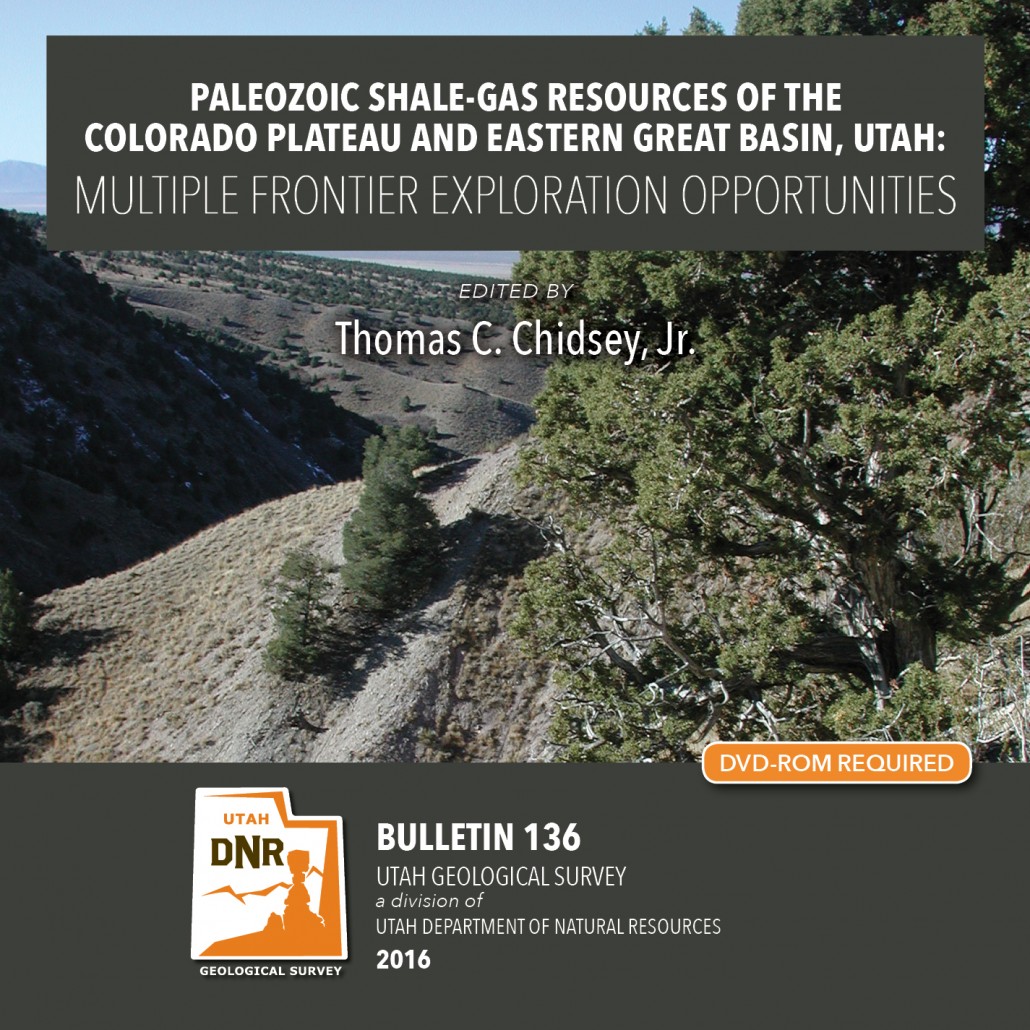The prestigious 2017 Crawford Award was presented to State Paleontologist James Kirkland in recognition of his work in “The Lower Cretaceous in East-Central Utah—The Cedar Mountain Formation and its Bounding Strata”, from Geology of the Intermountain West, Volume 3, Utah Geological Association.
Most think of Utah as the “real Jurassic Park” because of the important dinosaur collections excavated from the Late Jurassic Morrison Formation. However, the number of new and existing dinosaurs that Jim has discovered, excavated, and described from the Cedar Mountain Formation rivals the Morrison. His contributions demonstrate that the Early Cretaceous Cedar Mountain Formation is as productive and important to understanding dinosaur diversity and evolution. He has put Utah on the map for Early Cretaceous dinosaur research. Because of his work, Jim is recognized throughout the world as the expert on the Cedar Mountain Formation, its stratigraphy, and dinosaur fauna. This publication is the culmination of a career of studying this formation and the vertebrate fossils it contains; it is the quintessential reference on the Cedar Mountain. It solidifies the regional understanding of the Cedar Mountain lithostratigraphy, biostratigraphy, and environments of deposition. It also formalizes the member names, which he and a co-worker first applied a decade ago. It is well written and well organized with many annotated photographs and detailed illustrations.
The Crawford Award recognizes outstanding achievement, accomplishments, or contributions by a current UGS scientist to the understanding of some aspect of Utah geology or Earth science. The award is named in honor of Arthur L. Crawford, first director of the UGS.
news.nationalgeographic.com
Imagine sunrise on the last day of the Mesozoic era, 66 million years ago. Shafts of sunlight rake through the swamps and coniferous forests along the coast of what is now Mexico’s Yucatán Peninsula. The blood-warm seas of the Gulf of Mexico teem with life.

By: Thomas C. Chidsey, Jr.
This report (241 pages of text, 187 figures, 30 tables, and 21 appendices) presents the shale-gas potential of the Mississippian-Pennsylvanian Manning Canyon Shale/Doughnut Formation and the Pennsylvanian Paradox Formation (Chimney Rock, Gothic, and Hovenweep shales) of central and southeastern Utah, respectively. Shale beds within these formations are widespread, thick, buried deep enough to generate dry gas (or oil in some areas of the Paradox Basin), and sufficiently rich in organic material and fractures to hold significant recoverable gas reserves. This study provides a detailed evaluation of these potential shale-gas reservoirs including (1) drilling history, (2) identification and mapping/ correlating the major shale intervals, (3) characterization of the geologic, petrographic, geochemical, and petrophysical rock properties of those reservoirs from cores, (4) burial histories and organic maturation models, and (5) descriptions of outcrop analogs. Collectively, this study delineates the areas with the greatest gas potential (“sweet spots”) and offers recommendations for the best completion practices to develop these targeted shale-gas reservoirs.
inverse.com
Late last month, a nearly complete mounted Stegosaurus skeleton was put up for auction in Germany. The piece was a showstopper, valued at $2.7 million and described as the most complete skeleton of its species ever assembled. And even then, there was more, because the fossils showed battle wounds proving the beast had used its tail to successfully defend itself against a predator. Not only was this a Stegosaurus, it was a battle-hardened one.










